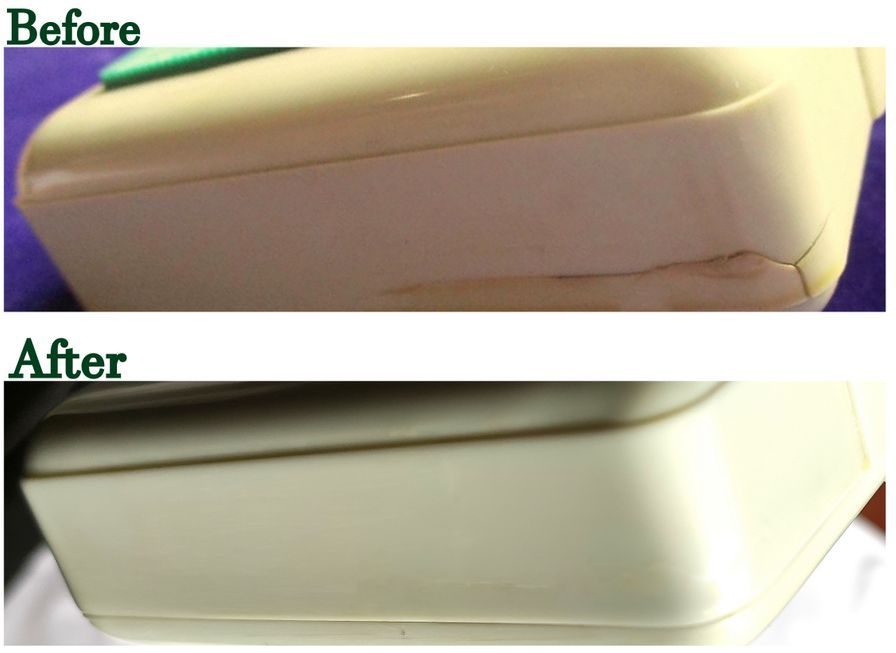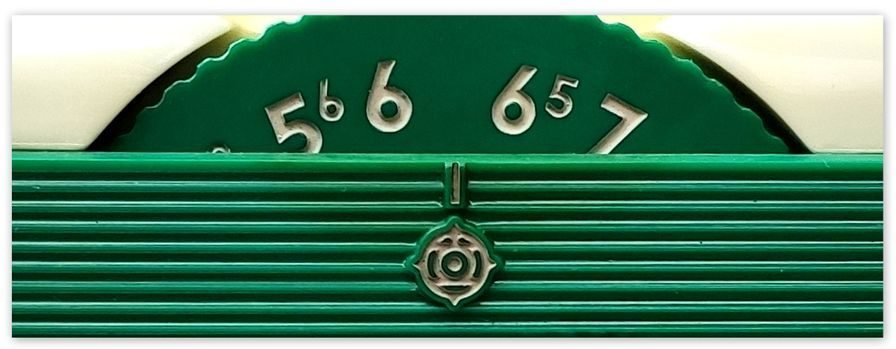
The Hitachi TH-668 was released onto the Japanese market around September/October 1957. It is Hitachi Ltd’s ( 日立) second transistor radio after the TH-669 (released earlier that year). Some collectors mistakenly believe the TH-668 was Hitachi’s third transistor radio after the shirt pocket TH-621, however collector Alan Kastner provides convincing evidence to show that the TH-621 was made for Hitachi by Standard (probably in exchange for high quality Hitachi transistors).
The Hitachi logo to the right was created by blending the old round Japanese character for ‘sun’ with the character for ‘rise’ to create this eye catching symbol that means ‘sunrise’.
This radio does not have conelrad/civil defence markings on the tuning dial, indicating that it was never sold in the USA, Canada, Cuba or Mexico. It may have been sold in other countries but I have yet to see evidence of that.
Thanks to fellow collector and lover of early Japanese transistor radios, Shaun Poole who allowed me to use this 1957 brochure that features the shirt pocket TH-621 and the TH-668. You’ll notice there is very little difference in price between the two.
I think it’s safe to say this is a rare radio and there are several reasons for it’s scarcity. It was probably only sold on the domestic market to Japanese consumers and therefore manufactured in limited quantities. At the time of it’s release transistors were still a relatively new and pricey technology and the original purchase price of 12900 yen reflects that. This was an expensive investment when you consider that in 1957 the average weekly Japanese wage was 4153 yen (REF: Japanese National Tax Agency). This leads me to believe that the TH-668 would only have been affordable to a select few, which is probably why there are so few of them around today. Another possible reason for their scarcity is that they’re made from very soft plastic that tends to chip and/or suffer from terrible yellowing. This ‘sunburn’ is never even and is often blotchy and unsightly. Presumably this would make them unattractive to the average householder who probably disposed of them without a second thought.
The photo to the right is an excerpt from an 11 page 1957 Trade magazine titled «Hitachi News». It roughly translates as:
«Hitachi is introducing a new transistor radio, model TH-668. Our motto is «high quality, reasonable price». A lot of research and effort has been invested in this model. It is a superheterodyne receiver. It’s circuitry contains 6 stones (transistors) and a germanium diode. It has the newest dip soldered wiring. It’s size and weight is almost the same as the TH-669, which is already on the market. What’s unique about this model is the leak proof battery case. Colours are scarlet, viridian and blue/green. The radio comes with a luxury leather case, auxiliary antenna, and a pair of earphones. The price is 12900 yen (battery excluded)».
The TH-668 is a long slender radio with elegant proportions. It measures 213 x 100 x 37 mm / 8.4 x 3.9 x 1.5 inch. As discussed in the translated brochure above it came in three colour variations; viridian (green) blue/green and scarlet. I believe this is the viridian version. I have never seen either of the other two colour variants. The cabinet colour is hard to describe; depending on the lighting conditions it can look grey or white or off-white but with hints of green. I took the photos below in early morning light and I’m happy to say they give a good approximation of the colour.
The crescent tuning dial sits above the corrugated viridian face like a (you guessed it!) rising sun. ‘Hitachi Transistor 6’ is embossed on the front in raised green font filled with silver, along with the Hitachi logo. The volume dial is slightly recessed to protect it from unwanted disturbance. The speaker grill is made up of thin plastic strips. It has a hinged handle on top with grooves cut into the underside for added grip. It has external antenna and earphone jacks on the side. Hitachi Ltd, Tokyo, Japan is embossed on the clean, sleek back.
This radio came to me from Kagoshima on the island of Kyushu, Japan. When I received it, it was in a bit of mess but I was determined to save it. I spent about 18 hours restoring the cabinet and that’s when I discovered how soft the plastic is. It had no chips but it did have several cracks and badly sunburnt areas. I had to remove the chassis, (easier said than done) thoroughly clean the cabinet and then repair the cracks before carefully wet-sanding it using 120 to 12000 grit and then put it all back together. This was a time consuming but worthwhile exercise.
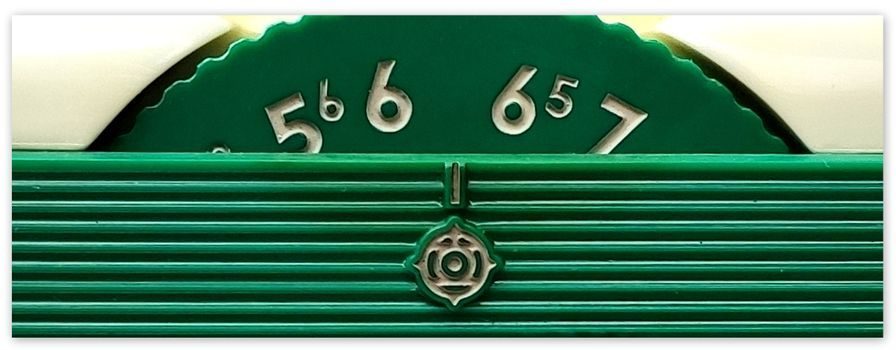
Hitachi, Ltd was founded in 1910 by Namihei Odaira as an electrical repair shop. As electric power became prevalent in the latter part of the Meiji Era, almost all electrical machinery being used in Japan was foreign-made. Odaira dreamed of «making electrical machinery with our own capabilities for the advancement of Japanese industry”. Their first product was a 5hp electric motor.
To the right is Hitachi founder Namihei Odaira (1874 — 1951) who graduated from the Electrical Engineering Department of Tokyo Imperial University in 1900. In 1906 he joined the Kuhara Mining Company at its Hitachi Village Copper Mine. Four years later, whilst still working for Kuhara, he started Hitachi as an in-house venture. In 1920 Hitachi Ltd became an independent company. Odaira worked with Hitachi from 1910 to 1951. It was Odaira who created the Hitachi logo.
In 1924 Hitachi manufactured Japans first electric locomotive and in 1932 they manufactured their first electric refrigerator. In 1946 they manufactured a table top radio, the aptly named ‘Sun Light’ model TTB-42.
To the left is where is all began; the original Hitachi repair shop in Ibaraki prefecture, 1910.
To the right is Hitachi’s first transistor radio, released in May 1957, the stately TH-669.
Following the end of World War II, Hitachi resumed production of railway related products with a focus on recovering Japan’s transportation capabilities. Japan quickly rebuilt after the war and from the late 1950s to the 1960s entered a period of full-scale, rapid economic development. During this period Hitachi focused on producing consumer electronics and appliances such as transistor radios, TVs, washing machines, and air conditioners.
In 1958 they were awarded the Grand Prix medal at the Brussels World Fair for their work on the electron microscope and other scientific equipment.
A November 1959 Billboard Magazine article states that at this time Hitachi was Japans biggest single manufacturer of transistor radios and components. This may or may not be true as I’ve also read similar references to both Toshiba and Sony.
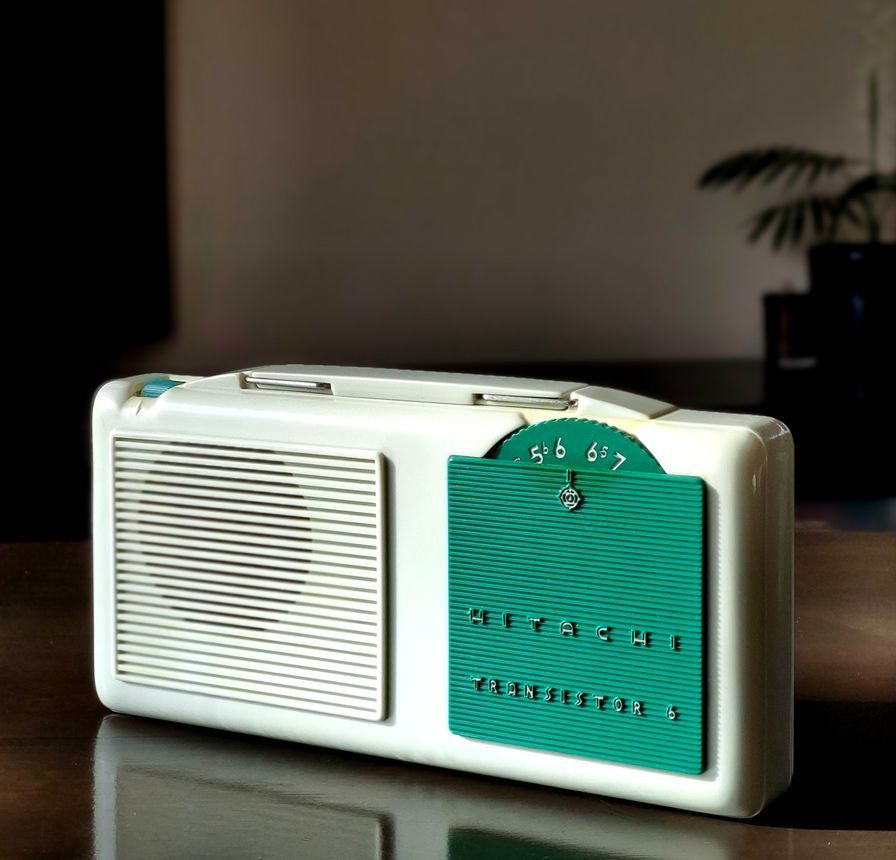




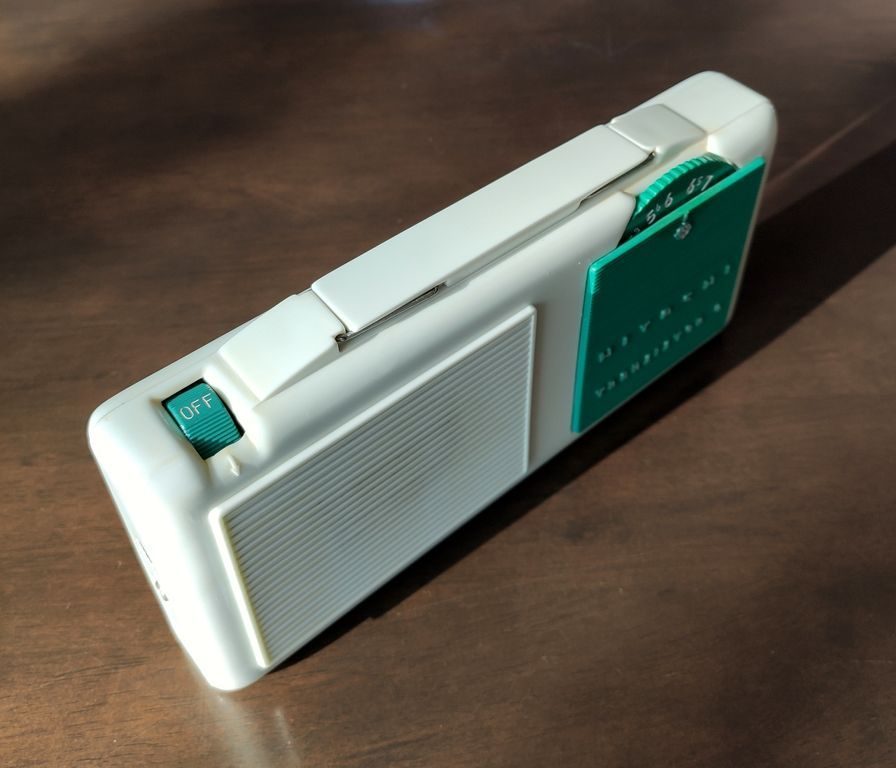

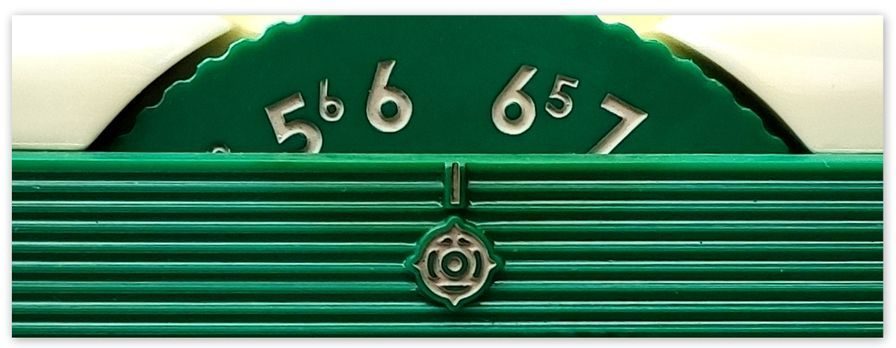
Special thanks to transistor radio tech whizz John Raskauskas for his commentary on the mysterious inner workings of the TH-668. His comments are based entirely on the photos and schematic diagram I sent him.
John states: «It appears to be a simple 6-transistor superhet circuit using early Hitachi oval PNP transistors. The silver-mica capacitors used for the intermediate-frequency transformers’ primary LC circuit are external, which would offer greater reliability and easier servicing if needed, though it appears in provided pictures that their outer coating has deteriorated over the years which might lead to eventual failure. And like some other earlier Japanese transistor sets, it has an extra winding on the ferrite-rod antenna to enable easy connection to an external aerial».
John has the following to say regarding the early glass Hitachi diode pictured to the left: «Was really amazed at the 1N34A detector diode which looks more like an engineering prototype than a production part with the red «spaghetti» used to indicate anode lead.»
The radio is powered by four ‘C’ cells (1.5V ea). Unfortunately the battery case pictured is not the original leak proof model. Broadcast (MW) band only.

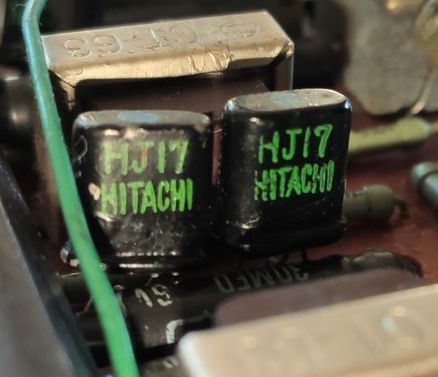
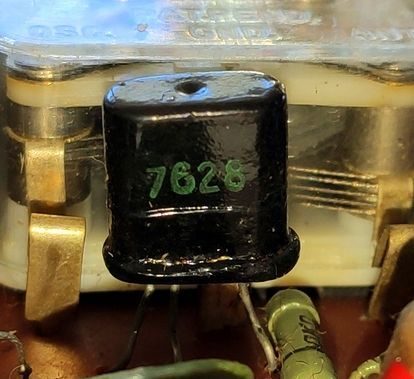
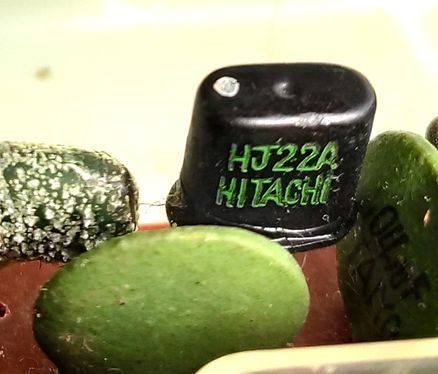
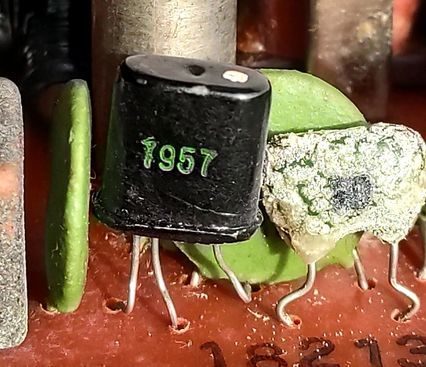
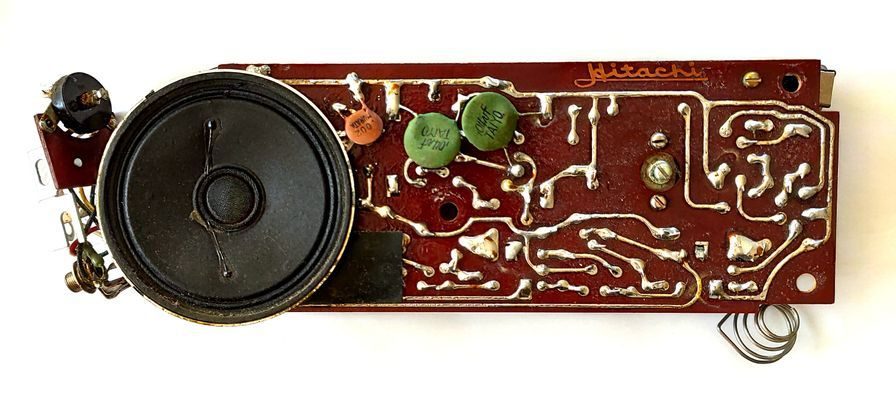
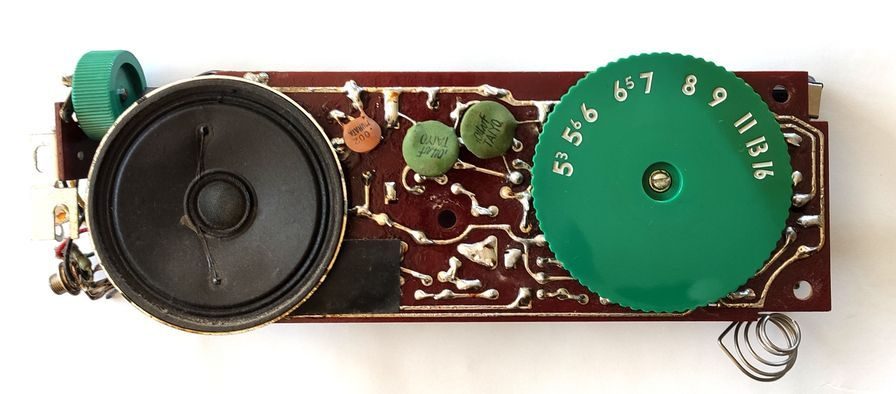
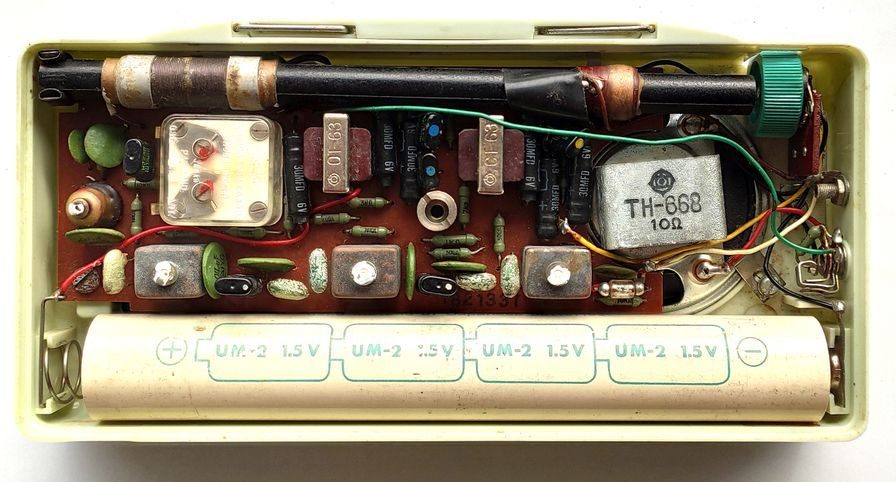

Below is an example of the work I did on the cabinet. You can see that the crack is now barely visible and the cabinet is in far better condition.
